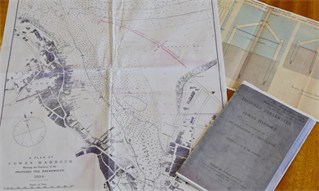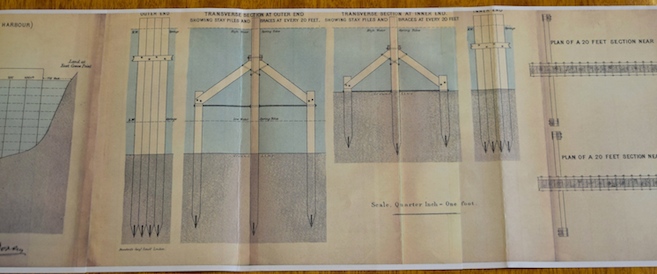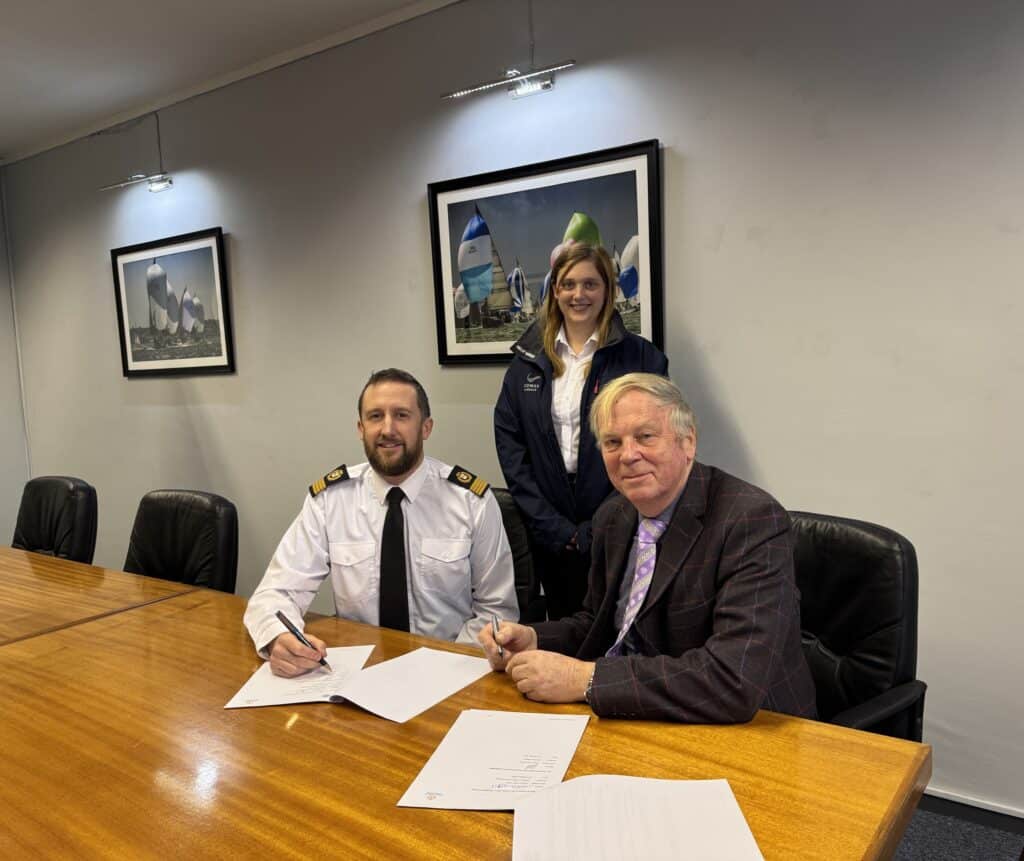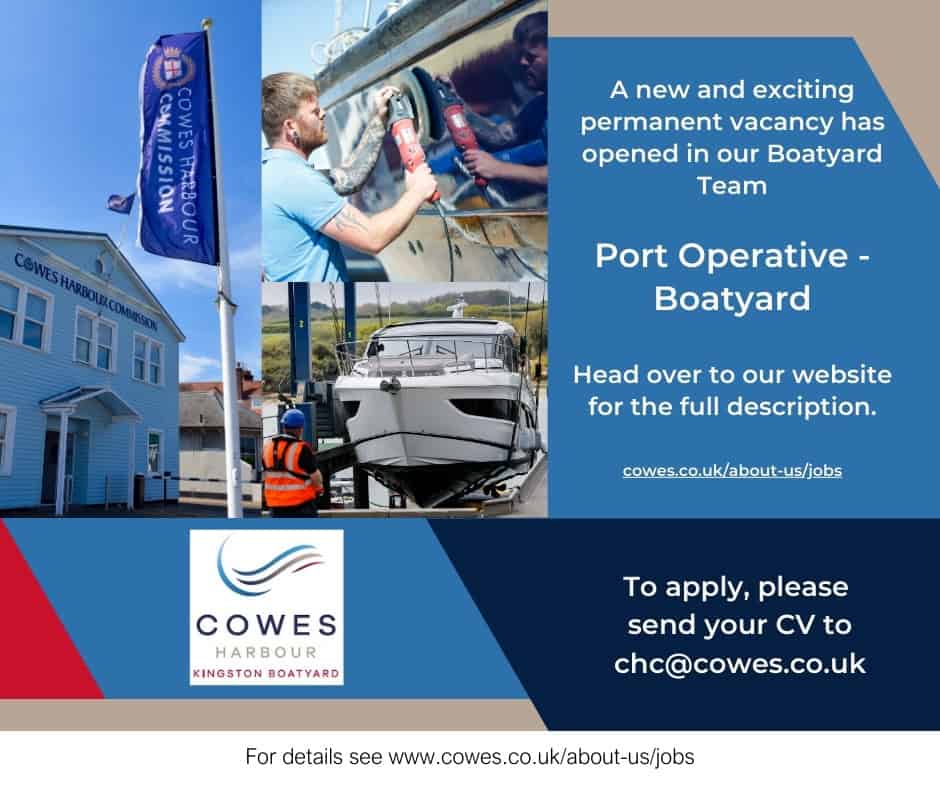
The proposal for a breakwater to protect Cowes Harbour from northerly and northeasterly winds was, in fact, first tabled in 18601 by Admiral de Horsey, a member of the Royal Yacht Squadron and one of the best-known residents of Cowes at this time.2
Admiral Sir Algernon Frederick Rous de Horsey KCB (1827 – 1922) was the son of Spencer de Horsey, MP, and Lady Louise, daughter of the first Earl of Stradbroke. His only sister was the Countess of Cardigan, whose reminiscences caused a scandal when they were published! De Horsey joined the Royal Navy in 1840 and was Aide de Camp to Queen Victoria in 1871. In 1861 he married Caroline, daughter of Admiral Andrew Drew. He was made a KCB on 9th November 1903. He frequently contributed letters to The Times and wrote An African Pilot and The Rule of the Road at Sea. He was chairman of the Isle of Wight magistrates for many years and also Deputy Lieutenant of the Island in 1913.3 On his death in 1922 he was described by The Times as ‘Doyen of the Navy’.4
De Horsey’s 52-year-long and illustrious career in the Royal Navy included several years as Commander-in-Chief of the Pacific Station, on the flagship HMS Shah.5 On 8th September 1878, Admiral de Horsey, in the Shah, visited Pitcairn Island.6 His Admiralty report includes the remark, “One stranger, an American, has settled on the island – a doubtful acquisition.” This line inspired Mark Twain to write the fictional story The Great Revolution in Pitcairn (1879).7
On 25th July 1892 Admiral de Horsey retired from the Royal Navy and lived at Melcombe House in Cowes on the Isle of Wight. On 20th February 1893, he wrote a letter to the Local Board of Cowes campaigning for a harbour breakwater.8 De Horsey proposed a pile breakwater 1,850ft (563.88m) long with a gap near the shore. The breakwater “would be beneficial to Cowes” by “improving the whole shore property between RYS Castle and the ferry; deepening the channel; and affording a sheltered harbour, which would attract a large number of small yachts and other vessels to this port”.
De Horsey wrote that the object of the proposed breakwater was “that of making a secure harbour” since “Cowes is no harbour during north-easterly gales”. He estimated that an outlay of £5,000 would suffice for materials, plant and labour, and the annual expense of a boatman to light and extinguish a light on the outer end of the breakwater would cost around £20.00, “the distance to row being only about 200 yards of water”!

Part of De Horsey’s “Plan and Sections of Breakwater”
De Horsey’s specification allowed for a breakwater 1,850 feet long and 1 foot 6 inches above high water spring tides, as shown on the “Admiralty plan of Cowes Harbour” (see top photo). Also, “a boat cut, 60 feet wide” was to be left open at 600 feet from the southeastern end of the breakwater. (At the time, the existing Shrape breakwater had not yet been constructed.)
The specification for de Horsey’s breakwater tells us it was to be constructed of “sheet piling, of 1 foot square Memel timber” with the pile heads tied together by stringers and the structure stiffened with stay piles and braces, as illustrated on his “Plan and Sections of Breakwater”. (De Horsey could not undertake ground investigations of the seabed, but had he done so, they would have demonstrated the unviability of his construction methods due to the seabed consisting mainly of soft silty alluvial clays, overlying stiffer shelly clays with limestone bands.)
We do not know how the Local Board of Cowes responded to de Horsey’s proposals, but we hope that he would be satisfied if he could see that his vision for Cowes Harbour is now being realised through the present day construction of a new detached breakwater.
To read more about the current Cowes Breakwater Project, visit the CHC website.
Top photo: Copy of Admiral de Horsey’s booklet Proposed Breakwater for Cowes Harbour and suggestions for the establishment of a Harbour Board, showing also the “Admiralty plan of Cowes Harbour” and “Plan and Sections of Breakwater” from the booklet.
1. Cowes Outer Harbour Environmental Impact Assessment – Non Technical Summary. ABPmer.
2. The Royal Yacht Squadron; memorials of its members, with an enquiry into the history of yachting and its development in the Solent; and a complete list of members with their yachts from the foundation of the club to the present time from the official records. By Montague Guest and William B. Boulton. John Murray, London, 1902.
3. http://discovery.nationalarchives.gov.uk/
4. Obituary: Algernon De Horsey, The Times, October 1922.
5. William Loney RN (http://www.pdavis.nl/Loney.htm)
6. The Mutineers of the ‘Bounty’: The Pitcairn Islanders from 1859–80. By Young, Rosalind Amelia, 1881.
7. The Mark Twain Encyclopedia. By LeMaster, J R; James D Wilson, 1993, New York and London: Garland Publishing.
8. Proposed Breakwater for Cowes Harbour and suggestions for the establishment of a Harbour Board. By Admiral A. F. R. de Horsey. Standford, London, 1894.




